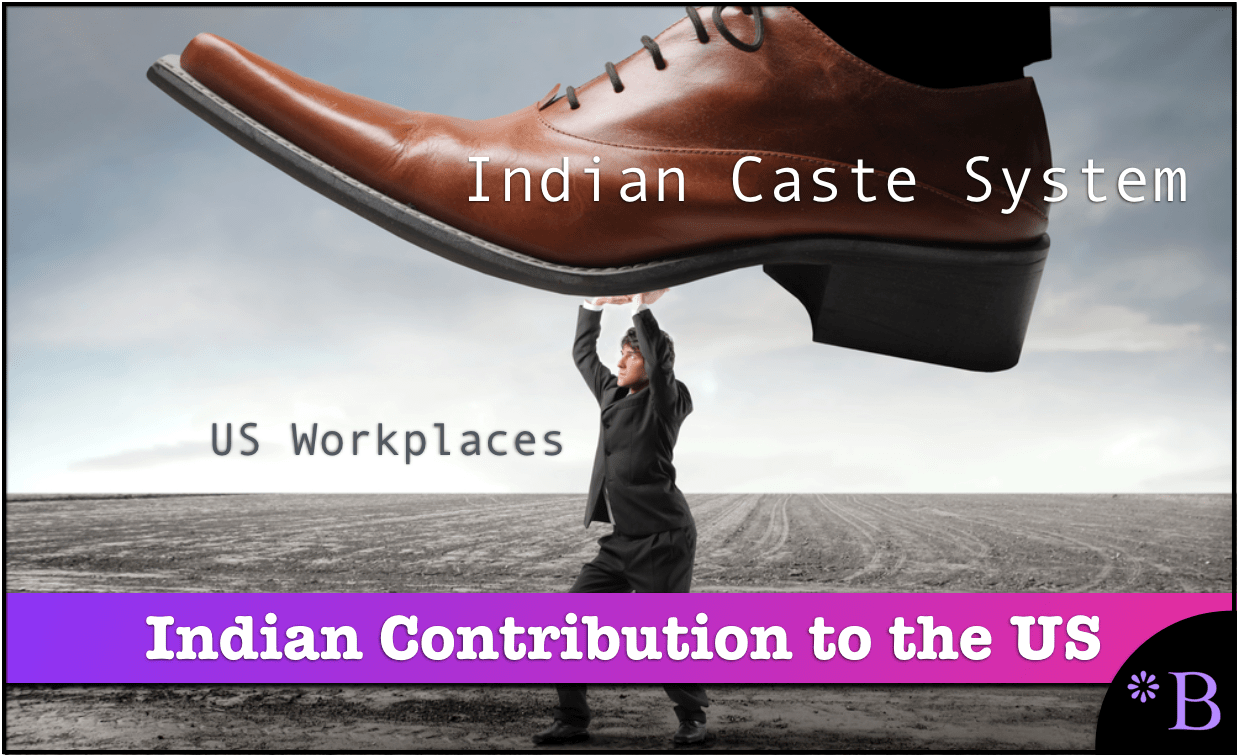How Indians Have Instituted The Indian Caste System In US Workplaces
Executive Summary
- Indians come from a highly abusive system called the caste system.
- They have instituted this system in the US.

Our References for This Article
If at any time you want to see our references for this article and also other Brightwork articles on Indian IT see this link.
Re-instituting an Indian Caste System Within Non-Indian Companies
India has a very rigid caste system that is based initially upon Hinduism, where each group comes from a different part of the body, as explained in the video above.
- Most of the Indians in the US come from the higher castes and, therefore, are very accustomed to a rigid social hierarchy. And with intense indifference to those lower on the social hierarchy and to be at the top.
- The comfort level of Indians with a caste system is found in how Indians attempt to recreate the caste system in their workplaces in the countries to which they migrate.
What Happens As Indians Become More Prevalent At Companies
The more Indians a company has, the more they can institute the caste system. However, as the following quotation explains, this is only made evident in the later stages of their control over an organization.
“Once Indians have taken over an organization, they would establish a caste system of Brahmin priest caste as senior managers. The Brahmin would act all civilize as vegetarians non-meat eaters while appointing lower caste Indians as middle management along with the Sikhs. The middle management Indians would be the ones who brutalize workers and do the bullying while the Brahmins just smiles and silently approve their discriminatory behavior. The organisation will turn into a caste system as follows: Brahmin Indians Middle caste Indians + Sikh Indians Older whites Young whites Non-Indian minorities. Harassment of non-Indians staff, in particular, sexual harassment, is not uncommon. Non Indians are deprived of career opportunities while bully to quit just so the Indians can import more Indians into the workplace using immigration loophole.”
The description above sounds horrible. It is the opposite of meritocracy and is mostly reinforced through Indians stacking the deck with as many possible Indians as possible. This enhances a strategy used by Indians where they use their numbers to act as a “block.” In the US, the domestic population tends to act as individuals. Indeed, there are various cliques and “networks.” For example, it is well known that when executives from Oracle begin working at a software vendor, that company can have several Oracle resources come over that form an Oracle clique at the new vendor. Oracle employees are so known for this, and thus known for worsening the condition of companies that they migrate to, ex-Oracle employees are a considerable liability.
Indians as Discriminating Against Other Indians
The following is a description of how they usually see the discrimination begin. An Indian wrote this observation.
“Many Indians in IT firms don’t just discriminate at the national level, many of them discriminate on a religion, race or caste-level. It usually starts like this. They first look at your name in the resume. Is it a “cool” sounding Brahmin name? (like Anand Gopalakrishnan). Or is it a Punjabi name? (Parminder Singh). Or perhaps, it’s a Telugu name (Sudheer Reddy). Or does your name sound totally unheard of, hard to pronounce and possibly from a lower caste? (Pazhanimuththu Kanakadas). Godforbid, hopefully it isn’t a Muslim name (Imtiaz Khan), an Indian Christian name (David Kamaraj) or a Chinese name (Pang Pang).”
This illustrates that even Indians who are not in the right caste or have the right religion from the dominant group receive discrimination. For instance, Indians’ employment in the US is not from all parts of India. It is concentrated in specific areas of India and from distinct castes, with Bhraman being the dominant caste. Typically, the US anti-discrimination laws are centered on race. First, they are only usually enforced for minority groups against whites. There is virtually no concern for discrimination by minorities against whites or other minorities. Second, Indian discrimination is more complicated than racial discrimination. Indians have a complicated discrimination modality that is sub-race and is a combination of Indians from specific areas and beyond that caste. Indians prefer the type of scenario that they had back in India. So, the preference is for Brahmans to be at the top of the organizations. For most outsiders, their divisions are invisible. Each group is seen as “Indian” by Western eyes (or at least all by the most trained). But for Indians, these divisions are highly relevant. They determine who can be hired into what role, how they relate to others, who have status over others, and so on.
Caste As The Enemy of the Domestic Working Population
The descriptions of Indian behavior in their newly adopted homes indicate that they form a semi-cohesive unit that discriminates in favor of more Indians at the expense of the domestic population. This is without considering how Indians generally make the companies they work for hostile to non-Indian workers in more subtle ways, often causing mental health problems in the domestic working population, as is covered in the article Do Indians Cause Mental Health Problems in the Work Environments of Non-Indians?
Conclusion
Indians are comfortable with the caste system, and they believe that they have the right to institute this caste system in all the countries to which they immigrate. Indians come from a highly abusive society, where it is considered entirely normal to lie to anyone to achieve one’s objectives.
As the work environment in many countries becomes more dominated by Indians, those work environments become abusive, as is covered in the article How the Awful and Abusive Indian Employment System Works. Caste is just one of the many parts of the abusive Indian social system.